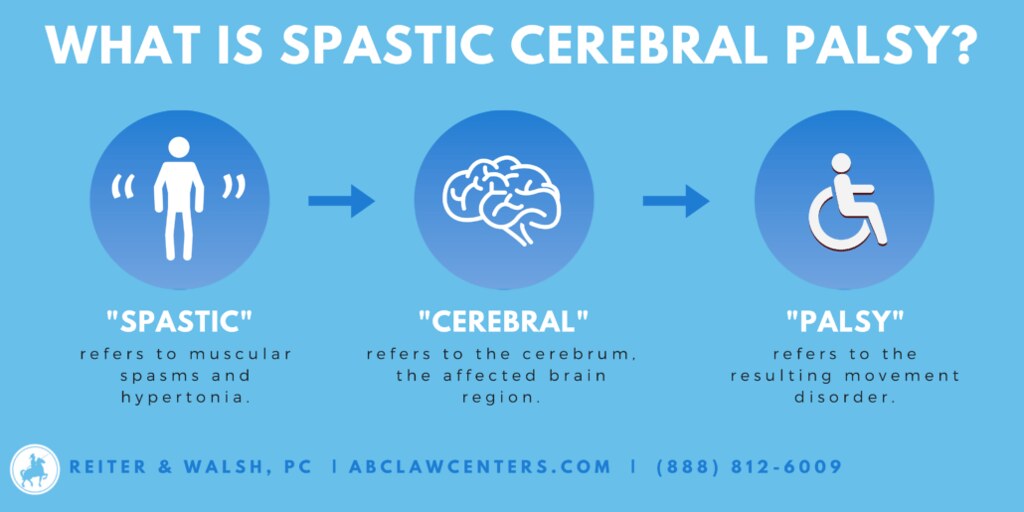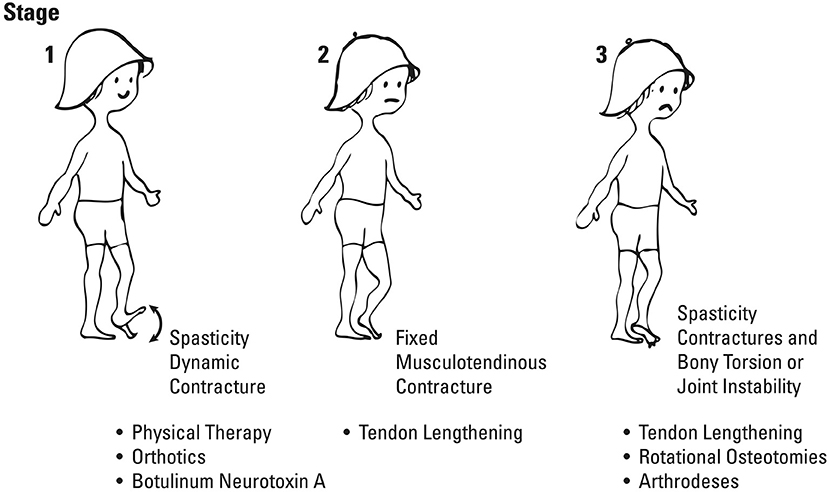Cerebral Palsy, often abbreviated as CP, is a group of neurological disorders that affect movement, muscle tone, and posture. It is one of the most common motor disabilities in childhood, impacting millions of individuals worldwide. While there is no cure for this condition, understanding its causes, recognizing its symptoms early, and exploring available treatments can significantly improve the quality of life for those affected. This article delves into the intricacies of Cerebral Palsy, shedding light on its origins, manifestations, and management options.

What is Cerebral Palsy?
Cerebral Palsy refers to a range of disorders caused by damage to the developing brain, typically before or during birth, or in early childhood. The term “cerebral” pertains to the brain, while “palsy” refers to problems with movement and posture. This condition affects each individual differently, with symptoms ranging from mild to severe. Some people may experience minor challenges, while others may require lifelong assistance with daily activities.
The hallmark of Cerebral Palsy is impaired motor function, which can manifest in various ways, including muscle stiffness, involuntary movements, poor coordination, and difficulty with balance. Additionally, many individuals with this condition also experience associated conditions such as intellectual disabilities, seizures, vision or hearing impairments, and speech difficulties.
Causes of Cerebral Palsy
The exact cause of Cerebral Palsy is not always clear, but it is generally attributed to abnormal brain development or damage to the brain during critical stages of growth. Several factors can contribute to this condition, and they are often categorized based on when the brain injury occurs.
Prenatal Causes
- Infections During Pregnancy: Maternal infections such as rubella, cytomegalovirus, or toxoplasmosis can interfere with fetal brain development.
- Lack of Oxygen Supply: Conditions like placental insufficiency or umbilical cord complications can deprive the fetus of adequate oxygen, leading to brain damage.
- Genetic Factors: In some cases, genetic mutations or inherited conditions may predispose a child to Cerebral Palsy.
Perinatal Causes
- Premature Birth: Babies born prematurely are at a higher risk due to underdeveloped brains and organs.
- Birth Asphyxia: A lack of oxygen during delivery, often caused by prolonged labor or complications, can result in brain damage.
- Low Birth Weight: Infants with low birth weight are more vulnerable to brain injuries.
Postnatal Causes
- Infections: Severe infections like meningitis or encephalitis during infancy can cause inflammation and damage to the brain.
- Traumatic Brain Injury: Accidents such as falls or car crashes that lead to head injuries can result in Cerebral Palsy.
- Jaundice: Severe or untreated jaundice in newborns can lead to kernicterus, a type of brain damage.
Symptoms of Cerebral Palsy
The symptoms of Cerebral Palsy vary widely depending on the severity and location of the brain injury. These symptoms typically become apparent during infancy or preschool years and may evolve over time. Early recognition is crucial for timely intervention and support.
Movement and Coordination Issues
- Muscle Stiffness: Increased muscle tone, known as spasticity, can make limbs rigid and difficult to move.
- Floppy Muscles: Decreased muscle tone, or hypotonia, results in loose, weak muscles.
- Involuntary Movements: Some individuals experience uncontrollable jerking or writhing motions.
- Poor Balance: Difficulty maintaining balance and coordination can affect walking and other activities.
Developmental Delays
- Delayed Milestones: Children with Cerebral Palsy may take longer to roll over, sit up, crawl, or walk.
- Speech Difficulties: Problems with articulation and language development are common.
- Feeding Challenges: Swallowing and chewing difficulties can lead to nutritional concerns.
Associated Conditions
- Intellectual Disabilities: Some individuals may experience cognitive impairments alongside motor challenges.
- Seizures: Epilepsy is a frequent co-occurring condition in people with Cerebral Palsy.
- Vision and Hearing Problems: Strabismus, cortical visual impairment, and hearing loss are potential complications.
Treatment Options for Cerebral Palsy
While there is no cure for Cerebral Palsy, a multidisciplinary approach to treatment can help manage symptoms, enhance mobility, and improve overall quality of life. Treatment plans are highly individualized, taking into account the specific needs and goals of each person.
Physical Therapy
Physical therapy is one of the cornerstones of managing Cerebral Palsy. It focuses on improving strength, flexibility, and motor skills through targeted exercises and activities. Therapists work closely with patients to develop personalized routines that address their unique challenges. Techniques such as stretching, strengthening exercises, and gait training can help individuals achieve greater independence in movement.
Occupational Therapy
Occupational therapy aims to enhance daily living skills and promote independence. Therapists teach adaptive techniques and provide tools to assist with tasks such as dressing, eating, and writing. For children, occupational therapy often involves play-based activities to build fine motor skills and hand-eye coordination.
Speech and Language Therapy
Speech and language therapy addresses communication difficulties and swallowing issues. Therapists use a variety of methods to improve articulation, language comprehension, and social interaction. For nonverbal individuals, augmentative and alternative communication devices may be introduced to facilitate expression.
Medications
Several medications can help manage symptoms associated with Cerebral Palsy. Muscle relaxants, such as baclofen or diazepam, are commonly prescribed to reduce spasticity and improve comfort. Anticonvulsant drugs may be used to control seizures, while medications for pain management can alleviate discomfort.
Surgical Interventions
In some cases, surgery may be recommended to correct structural abnormalities or improve function. Orthopedic surgeries, such as tendon lengthening or joint realignment, can enhance mobility and reduce pain. Selective dorsal rhizotomy, a procedure that involves cutting specific nerve roots in the spinal cord, is sometimes performed to relieve severe spasticity.
Assistive Devices
Assistive devices play a vital role in supporting individuals with Cerebral Palsy. Wheelchairs, walkers, braces, and orthotics can aid mobility and stability. Communication aids, such as speech-generating devices, empower nonverbal individuals to interact effectively. Technological advancements continue to expand the range of available options, enhancing accessibility and independence.
Alternative Therapies
Many families explore complementary therapies to supplement traditional treatments. These may include acupuncture, chiropractic care, hydrotherapy, and hippotherapy (therapeutic horseback riding). While scientific evidence supporting these approaches varies, they are often valued for their potential to improve well-being and quality of life.
Living with Cerebral Palsy
Living with Cerebral Palsy presents unique challenges, but with appropriate support and resources, individuals can lead fulfilling lives. Education, advocacy, and community involvement are essential components of navigating this journey. Schools, healthcare providers, and support networks play pivotal roles in fostering an inclusive environment where people with Cerebral Palsy can thrive.
Educational Support
Children with Cerebral Palsy often benefit from specialized educational programs tailored to their needs. Individualized Education Plans (IEPs) ensure that students receive accommodations and modifications to succeed academically. Teachers trained in inclusive practices create welcoming classrooms that celebrate diversity and encourage participation.
Advocacy and Awareness
Raising awareness about Cerebral Palsy helps combat stigma and promotes acceptance. Advocacy organizations work tirelessly to secure rights, funding, and opportunities for individuals with disabilities. By amplifying their voices and sharing stories, we can foster a more inclusive society that values every person’s contributions.
Community Resources
Support groups, recreational programs, and adaptive sports leagues offer valuable opportunities for connection and growth. Engaging with others who share similar experiences fosters camaraderie and resilience. Accessible public spaces, transportation, and technology further empower individuals with Cerebral Palsy to participate fully in their communities.





